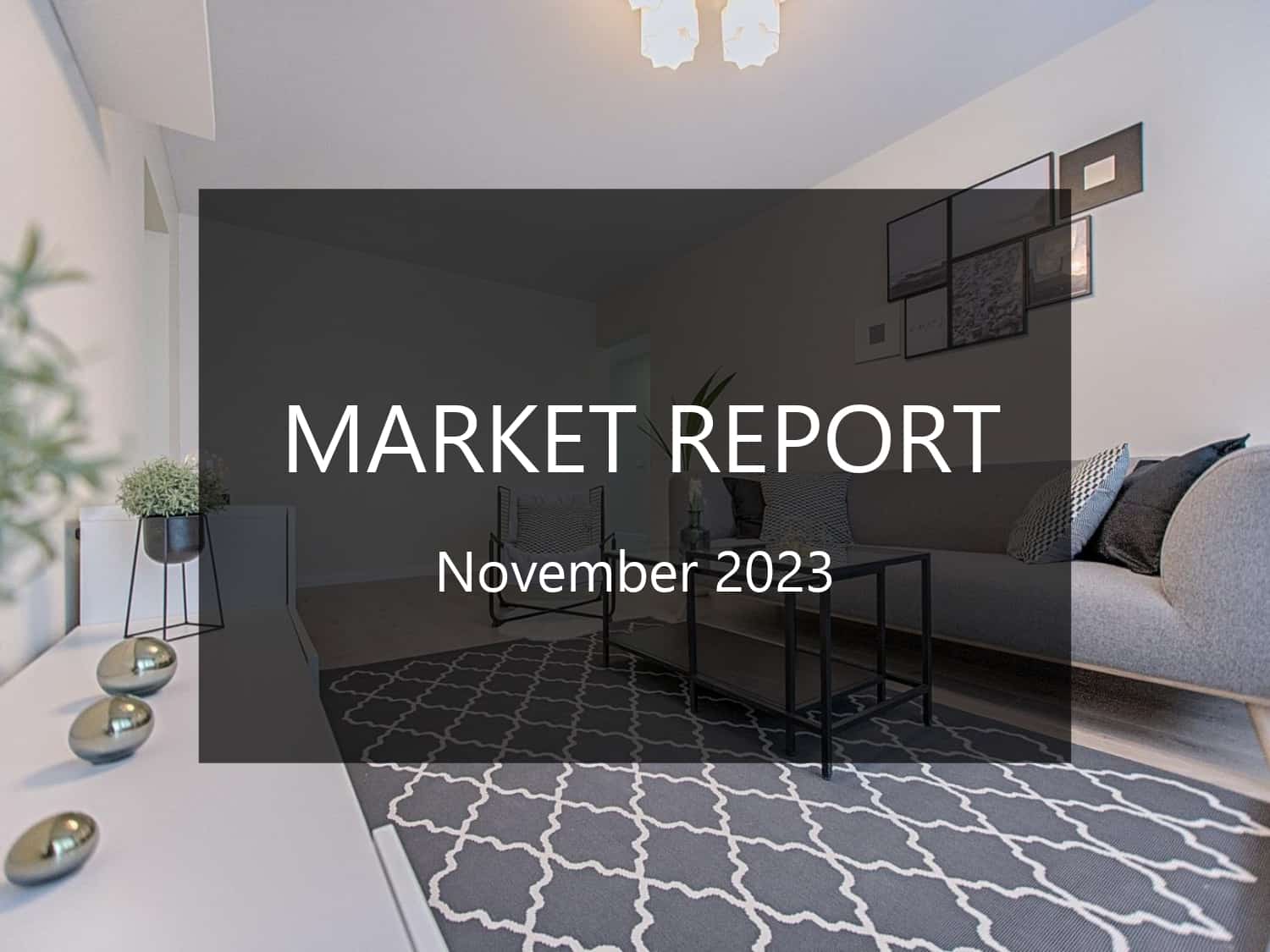Topics:
- Introduction: Navigating the Current Market
- Home Price Trends: Stability Amidst Uncertainty
- Mortgage Rate Movements and Affordability
- The Rise of Multi-Generational Living
- Inventory and New Listings: A Glimmer of Hope
- The Future of Homeownership: Millennials and Gen Z
- Conclusion: Your Path to Homeownership
Introduction: Navigating the Current Market
In the November 2023 real estate market, there’s a palpable sense of uncertainty and a need for clarity. Sean Dobson, CEO of Amherst, encapsulates this sentiment, noting the inherent unpredictability in current forecasts. This uncertainty is compounded by a significant inventory shortage, over 40% lower than pre-pandemic levels, which fundamentally impacts market dynamics. Despite these challenges, the market is not poised for a crash, as the basic principles of supply and demand continue to hold. Prices remain robust, and there’s a cautious watch for potential reacceleration in home prices. The Case-Shiller report and the FHFA price index both indicate strength in the housing market, with most regions showing positive price changes. This scenario underscores the importance of understanding and navigating the current market trends amidst fluctuating conditions and widespread myths.
Home Price Trends: Stability Amidst Uncertainty
Recent Trends in Home Prices
The latest data reveals a surprising trend: a 0.9% increase in home prices on a seasonally adjusted basis, defying the usual seasonal slowdown in appreciation. This unexpected rise suggests a potential reacceleration of home prices, diverging from typical market patterns.
Debunking Myths About a Potential Crash
Contrary to some predictions, the housing market is not on the brink of a crash. This resilience is attributed to the ongoing supply and demand dynamics shaping the market. The FHFA price index aligns with this view, showing a moderation in price increases later in the year, signaling a return to more normal appreciation levels. All major indexes, including Case-Shiller, FHFA, and CoreLogic, consistently demonstrate strong price appreciation, especially noteworthy for this time of year.
Overall Market Outlook
The current trajectory suggests a move towards normal appreciation rates, a positive development for addressing housing affordability. Despite various economic uncertainties, the desire for homeownership remains a strong market driver, reflecting the enduring appeal and stability of the housing sector.
This section provides a comprehensive overview of the current state of home prices, dispelling fears of a market crash and highlighting a gradual return to standard appreciation patterns.
Mortgage Rate Movements and Affordability
In the current real estate landscape, mortgage rates have become a pivotal factor influencing home affordability. As of late 2023, there has been a noticeable shift in mortgage rates, with a decline from the highs of over 8% to around 7.38%. This change, although significant, still places rates well above the levels experienced by millennials and Gen Xers in recent years.
Historically, from 2016 to 2022, mortgage rates remained under 5%. However, in 2022, they escalated sharply, impacting affordability dramatically. The increase in mortgage rates has led to a substantial rise in monthly mortgage payments since January 2021, with even more pronounced increases observed since the beginning of 2023.
Despite these challenges, the desire for homeownership remains strong. Surveys, such as the Housing Trends Report by the National Association of Home Builders, indicate a consistent interest in buying homes in the next 12 months. This trend suggests that, while affordability is a significant concern, it has not dampened the aspiration for homeownership.
The current mortgage rate scenario presents a complex environment for potential homebuyers. It’s crucial to navigate these waters with a clear understanding of how these rates impact overall affordability and to explore various financing options that might be available. As a loan originator, it’s essential to guide potential buyers through this landscape, helping them make informed decisions that align with their financial capabilities and homeownership goals.
The Rise of Multi-Generational Living
Exploring the Increase in Multi-Generational Home Purchases
The real estate market has seen a significant shift towards multi-generational home purchases. In 2022, multi-generational buying reached an all-time high of 14%, a notable increase from 11% in 2021. This trend represents about a 30% rise in people opting for multi-generational homes, indicating that more than one out of every ten houses sold falls into this category. This shift presents a unique opportunity in the real estate landscape, especially considering the challenges faced by the industry in recent times.
Benefits and Challenges of Multi-Generational Living
Multi-generational living has seen an increase across all age groups over the past five decades, with the fastest growth among adults aged 25 to 34. This trend could be a response to the affordability challenges faced by millennials. Builders are now responding to this demand by developing multi-generational floor plans. These designs often include two master suites, kitchenettes, shared spaces for family gatherings, and additional privacy features. Some plans even offer flex spaces that can adapt to changing family needs, like shifting from a family office to a nursery.
The benefits of multi-generational living are numerous. For young families, it provides built-in childcare options, allowing parents to enjoy time together while grandparents bond with their grandchildren. For grandparents, it offers built-in pet sitters and the joy of spending more time with family. However, it’s important to note that this arrangement isn’t suitable for everyone. About 23% find it stressful, indicating that compatibility and personal preferences play a significant role in the success of multi-generational living.
Impact on the Market
This trend is particularly prominent in the Hispanic community, which is expected to drive housing for the next decade. The rise in multi-generational living is not just a niche market trend but a significant shift that reflects changing family dynamics and economic realities. It presents a unique opportunity for real estate professionals to cater to a growing segment of the market that values family connections and affordability.
Inventory and New Listings: A Glimmer of Hope
In the current real estate market, a key point of focus is the inventory levels and the influx of new listings. Despite the ongoing challenges, there’s a glimmer of hope for potential buyers as we navigate through these times. The market continues to grapple with inventory shortages, a situation that has persisted since the pre-pandemic era. As noted by Sean Dobson, CEO of Amherst, the uncertainty in forecasting is high, but one clear aspect is the significant reduction in inventory, over 40% since pre-pandemic times. This shortage underpins a crucial market dynamic: with limited supply, the likelihood of a price crash is minimal, as real estate prices are fundamentally driven by supply and demand.
Despite the overarching inventory challenges, there are signs of positive movement. The recent data indicates an uptick in newly listed homes, presenting opportunities for buyers who have been on the sidelines. This increase in listings, while not solving the inventory crisis entirely, offers a ray of hope for those seeking to enter the market.
The stability of home prices is another aspect closely tied to inventory levels. With the current supply constraints, prices have maintained a steady course, debunking fears of a market crash. The Case-Shiller report and the FHFA price index both reflect this stability, with home prices showing resilience across most regions. The only exception noted is in the South Atlantic region, where an increase in construction activity has led to a slight moderation in prices.
Understanding the dynamics of inventory and new listings is crucial for potential buyers. The market, while challenging, is not devoid of opportunities. The key is to stay informed and be ready to act when the right opportunity presents itself. The current scenario, with its mix of inventory shortages and emerging new listings, requires a strategic approach to home buying, one that balances patience with readiness to seize opportunities as they arise.
The Future of Homeownership: Millennials and Gen Z
As we look towards the future of the real estate market, it’s evident that Millennials and Gen Z are playing an increasingly pivotal role. These younger generations are not just entering the market; they’re reshaping it with their unique needs and perspectives.
One of the most notable trends we’re seeing is the rise of multi-generational living. This isn’t just about saving money; it’s a lifestyle choice that reflects changing family dynamics and cultural values. In 2022, multi-generational home purchases reached an all-time high, accounting for 14% of all sales. This trend is particularly pronounced among adults aged 25 to 34, indicating a strategic approach by Millennials to tackle the affordability challenges they face.
Builders are responding to this shift. We’re seeing more homes with designs that cater to multi-generational living, like dual master suites and adaptable living spaces. This isn’t just a niche market; it’s becoming a mainstream consideration in home design.
The Hispanic community is at the forefront of this trend, leading the charge in multi-generational home buying. Their influence is expected to be a major driving force in the housing market for the next decade.
However, challenges remain, particularly around affordability. The current mortgage rate environment is a new reality for many in these younger generations, who haven’t experienced high rates in their adult lives. This impacts their buying power and shapes their decisions.
Despite these challenges, the dream of homeownership remains strong. It’s a key factor in building net worth, with a growing gap between homeowners and renters. For Millennials and Gen Z, navigating this market means balancing their aspirations with the realities of the current economic landscape. It’s a journey that requires careful planning, but the rewards of homeownership make it a worthwhile endeavor.
Conclusion: Your Path to Homeownership
As we navigate the ever-evolving real estate market of November 2023, it’s crucial to stay informed and make educated decisions. The market has shown resilience and adaptability, with trends like multi-generational living gaining traction and mortgage rates influencing affordability in significant ways. The desire for homeownership remains strong, and understanding these dynamics is key to realizing the American dream of owning a home.
For those considering stepping into the homeownership journey, it’s important to recognize the opportunities and challenges present in today’s market. From analyzing mortgage rate movements to understanding the impact of inventory levels, each aspect plays a vital role in the home buying process. The rise of multi-generational living offers new possibilities, catering to diverse family needs and financial situations.
As a loan originator, my role is to guide you through these complexities, offering insights and advice tailored to your unique situation. Whether you’re a first-time homebuyer or looking to navigate the changing landscape, I’m here to assist you in making informed decisions. Remember, the path to homeownership is a journey, and with the right guidance and information, it’s a journey that can lead to long-term success and satisfaction.
I invite you to reach out with any questions or concerns you may have about buying a home. Together, we can explore your options, understand the market trends, and find the best path forward for your homeownership goals. Let’s embark on this journey together, with confidence and clarity.
This article was provided with content from Keeping Current Matters, Inc. The information contained, and the opinions expressed, in this article are not intended to be construed as investment advice. Keeping Current Matters, Inc. does not guarantee or warrant the accuracy or completeness of the information or opinions contained herein. Nothing herein should be construed as investment advice. You should always conduct your own research and due diligence and obtain professional advice before making any investment decision. Keeping Current Matters, Inc. will not be liable for any loss or damage caused by your reliance on the information or opinions.








